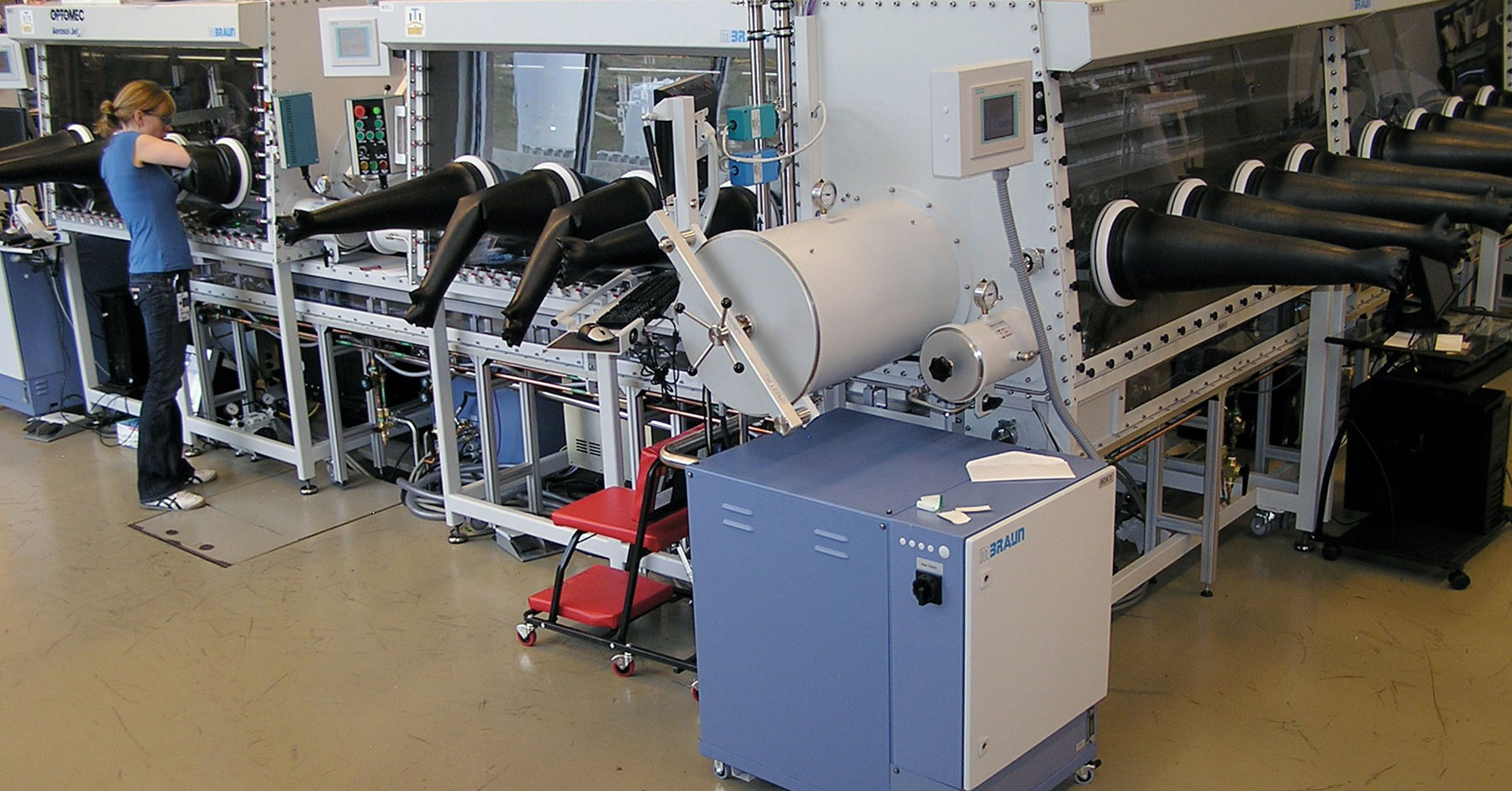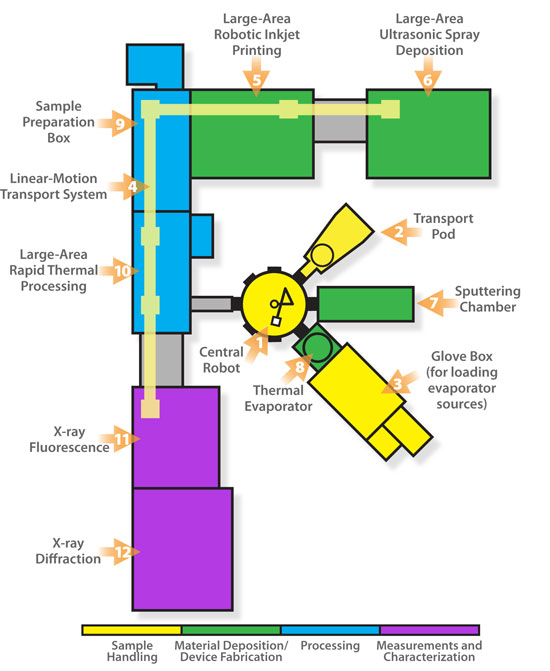Atmospheric Processing Platform
The atmospheric processing platform offers powerful capabilities with integrated tools for depositing, processing, and characterizing photovoltaic materials and devices.

In particular, this platform focuses on methods to deposit ("write") materials onto a variety of substrates and then further process into optoelectronic materials using rapid thermal processing.
The atmospheric processing platform allows deposition in any sequence and is applicable to a range of photovoltaic (PV) technologies, including wafer/film silicon, copper indium gallium diselenide, cadmium telluride, organic PV, sensitized solar cells, multiple-exciton-generation PV, nano-architecture PV, and concentrating PV.
Most of the techniques are located entirely in glove boxes at atmospheric pressure; several techniques, however, occur within a vacuum (i.e., thermal evaporation, sputtering). Samples can remain in ambient atmospheres with a linear-motion transport system between glove boxes.
Basic Platform Capabilities
Sample Handling
1. Central robot
2. Transport pod – allows inter-tool transfer of samples
3. Glove box – for loading evaporator sources
4. Linear-motion transport system
Material Deposition/Device Fabrication
5. Large-area robotic inkjet printing
6. Large-area ultrasonic spray deposition
7. Sputtering chamber
8. Thermal evaporator
Processing
9. Sample preparation box
10. Large-area rapid thermal processing
Measurements and Characterization
11. X-ray fluorescence
12. X-ray diffraction
The figure shows where chambers or stations—numbered in the list above—are physically located within the atmospheric processing platform.

Schematic of the atmospheric processing platform and its interconnected capabilities. The color bar is a key to the basic class of each capability.
Other Support Capabilities
The atmospheric processing platform contains many capabilities for atmospheric processing research. But additional integrated and stand-alone measurements and characterization capabilities are available elsewhere in the surrounding laboratory space. Samples from the atmospheric processing platform can be transported to these other tools using a mobile transport pod.
Share
Last Updated April 4, 2025
